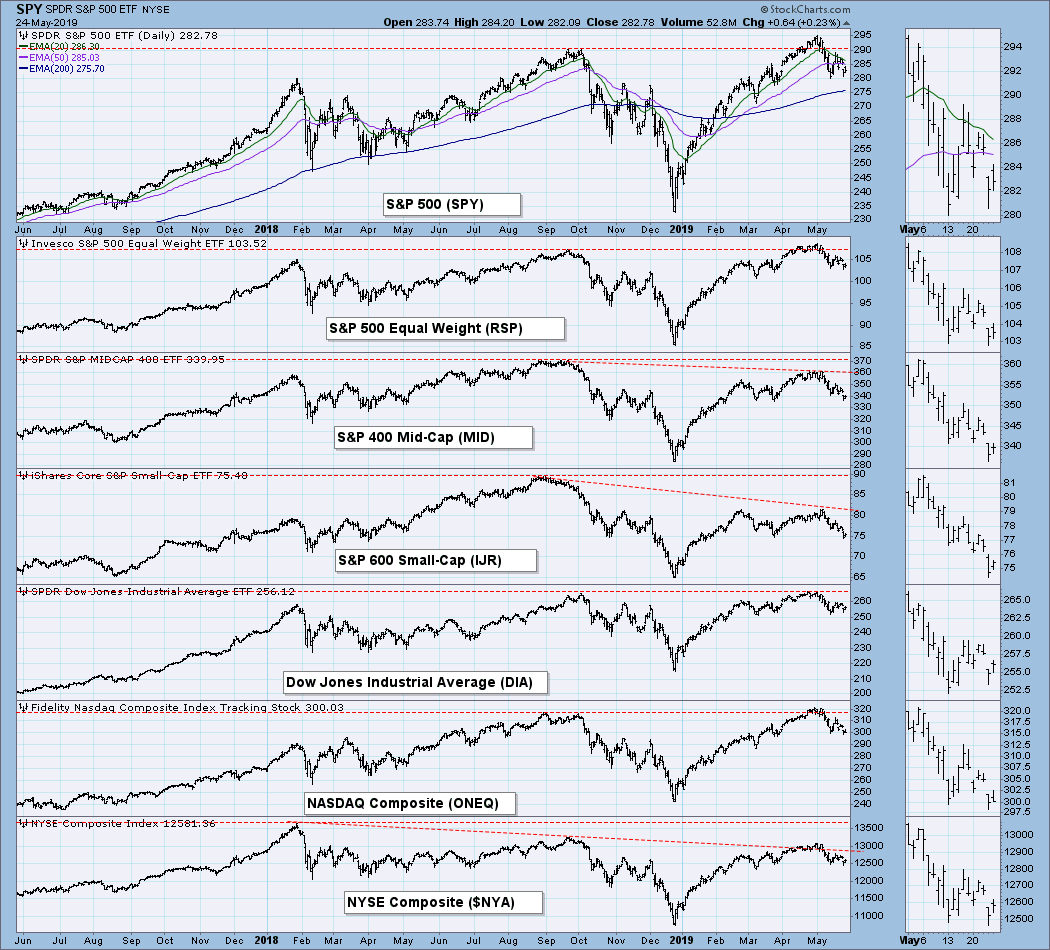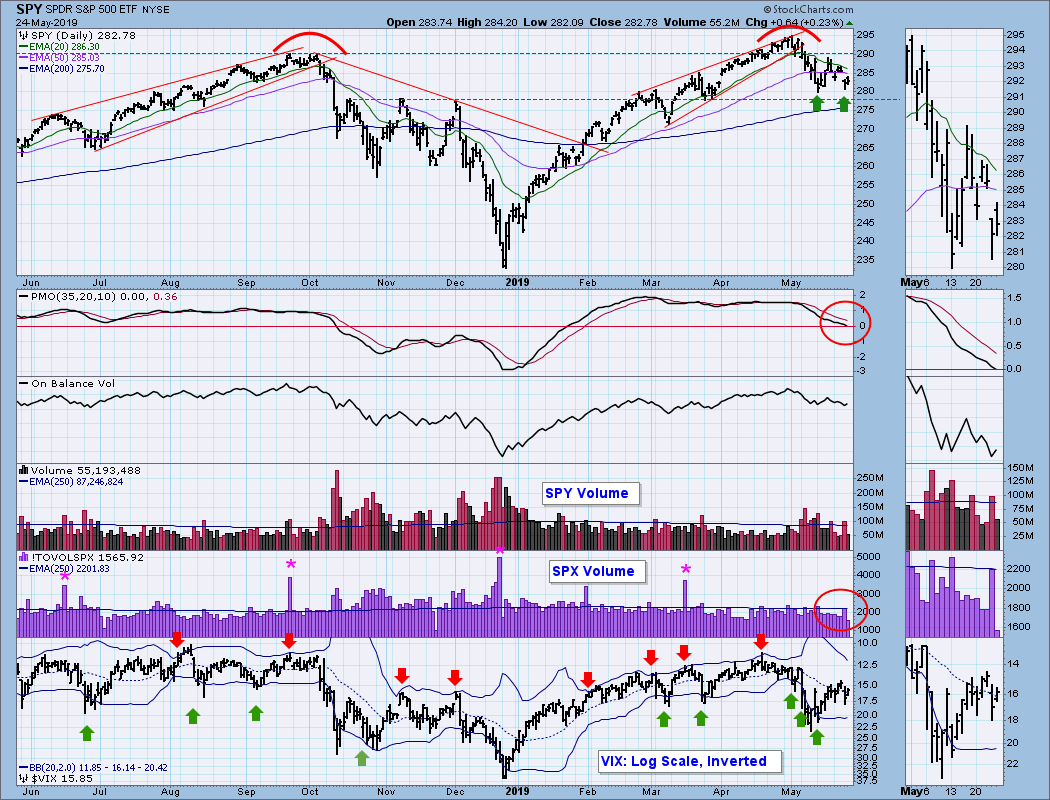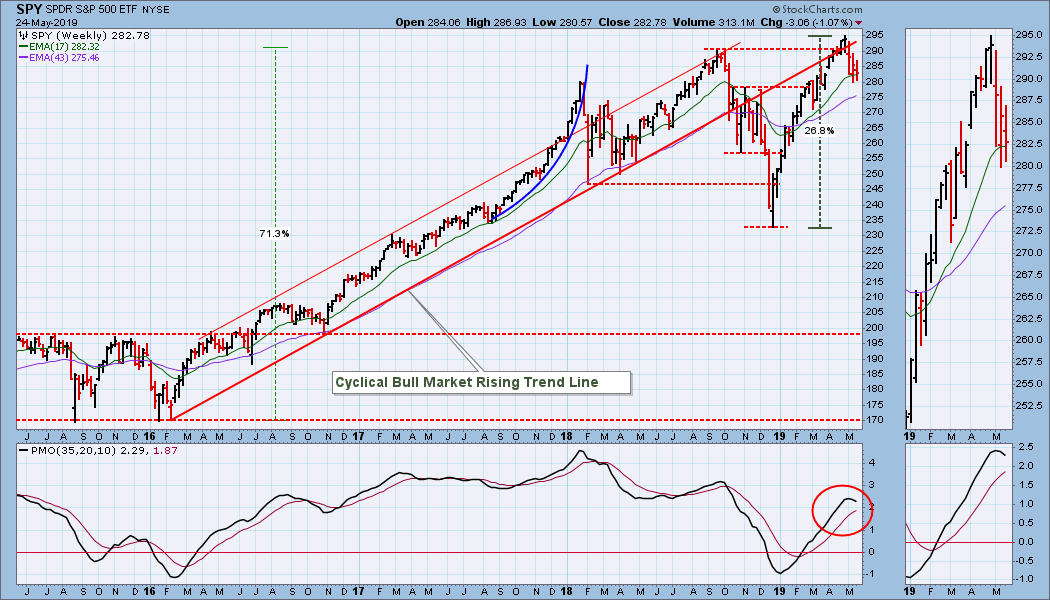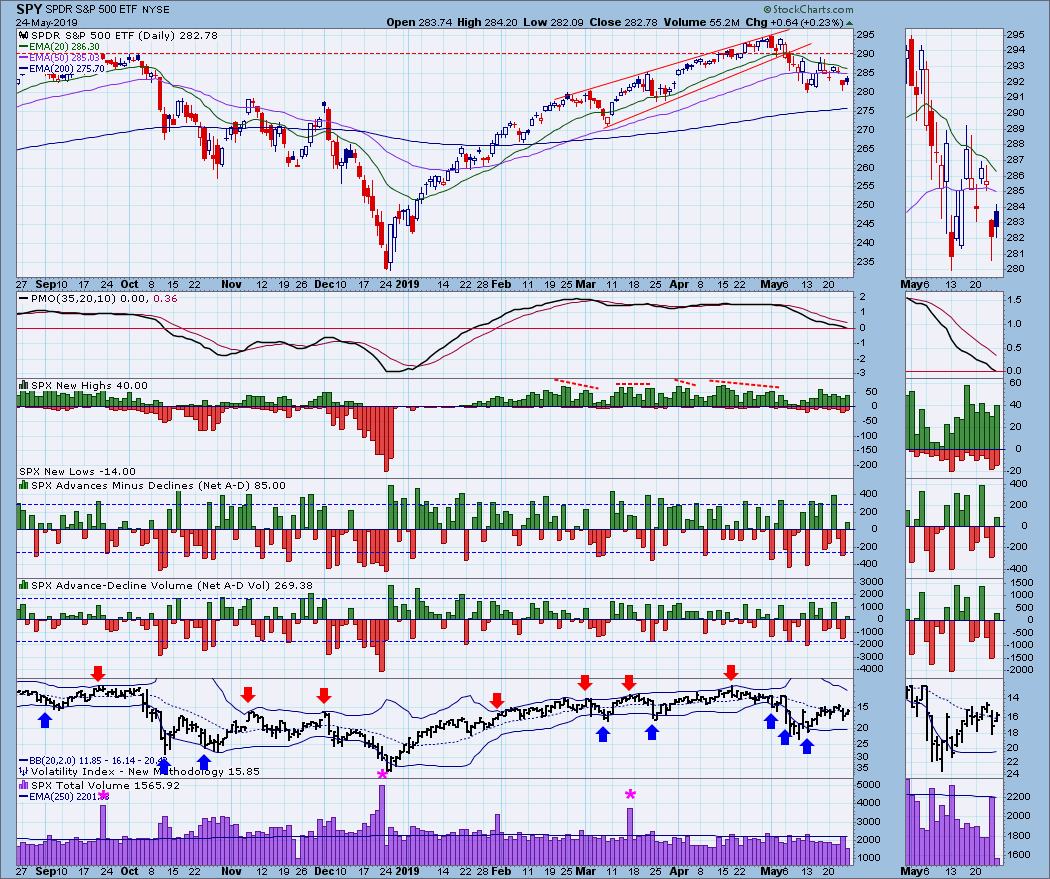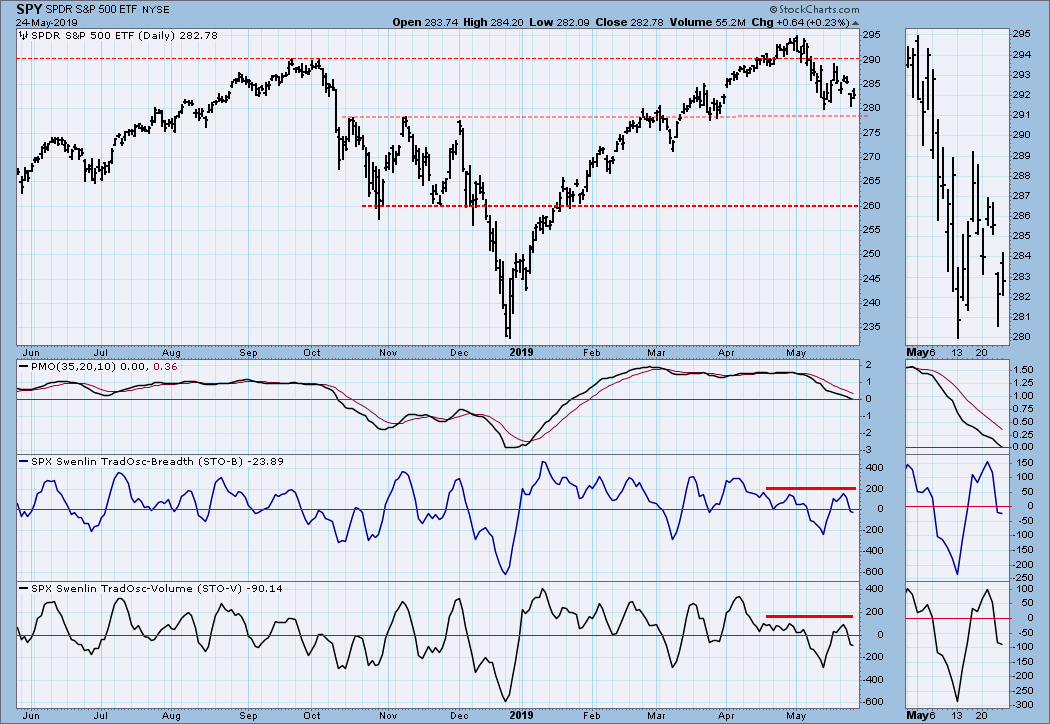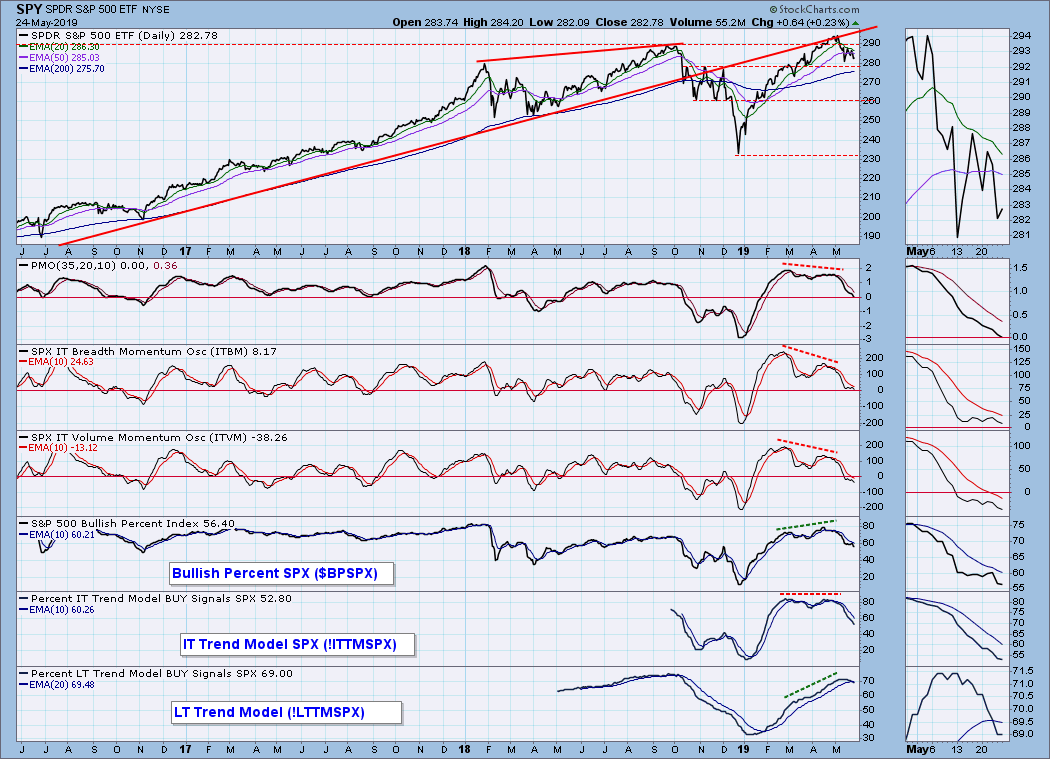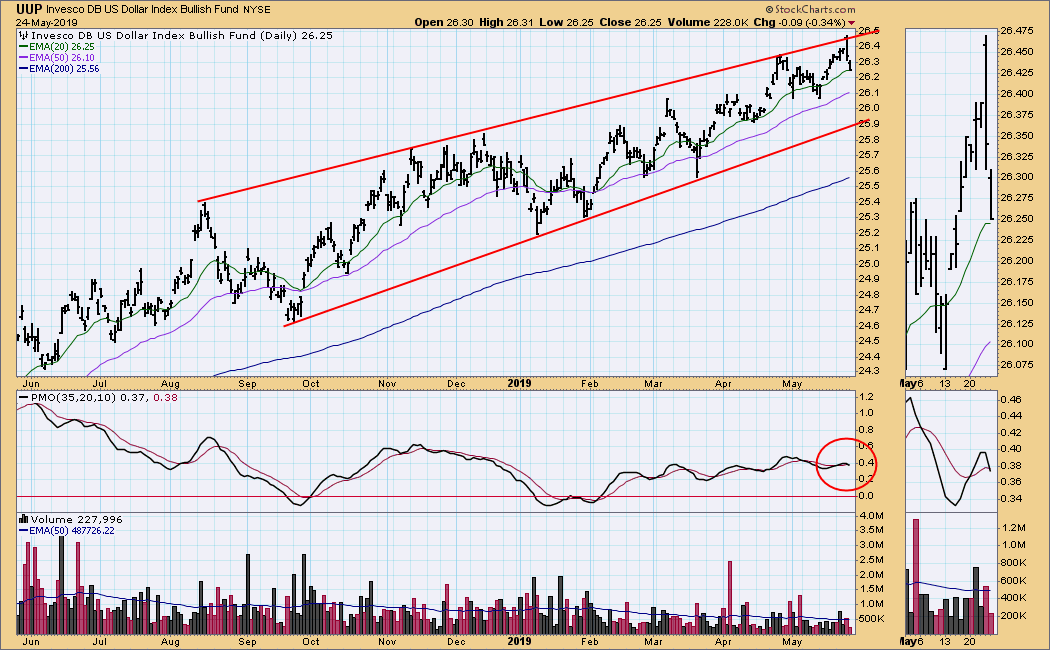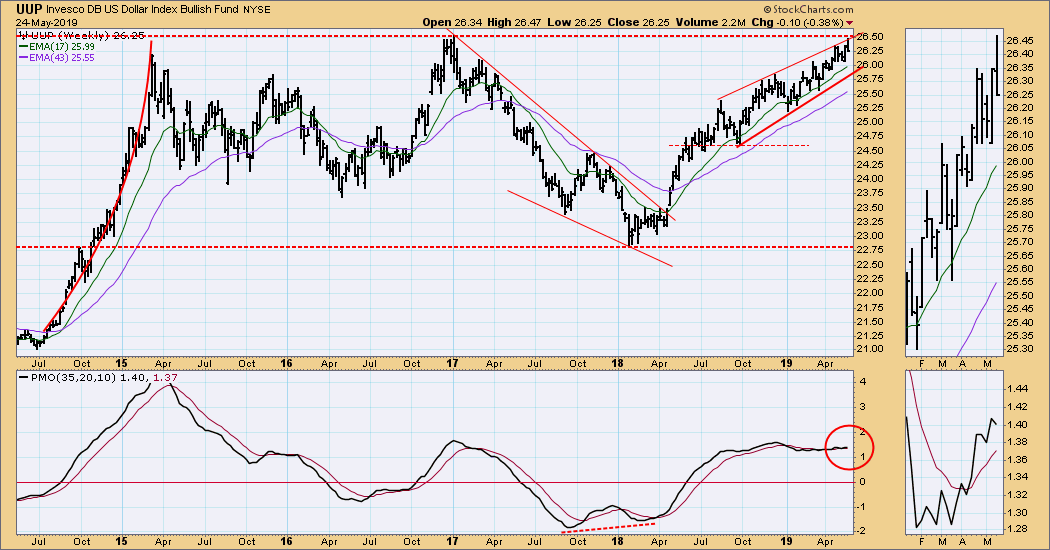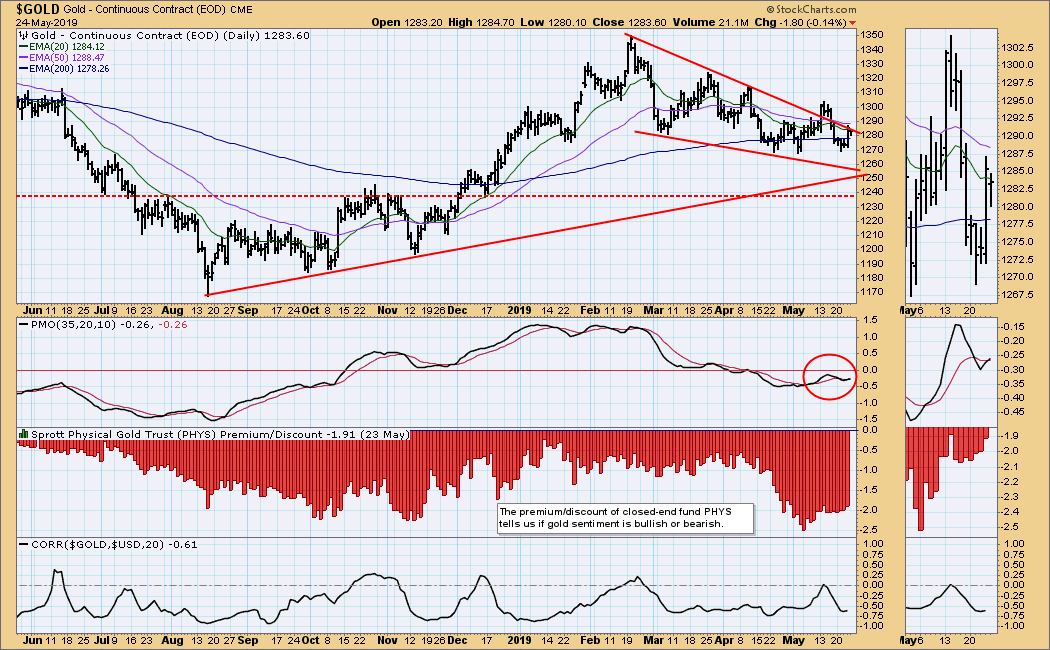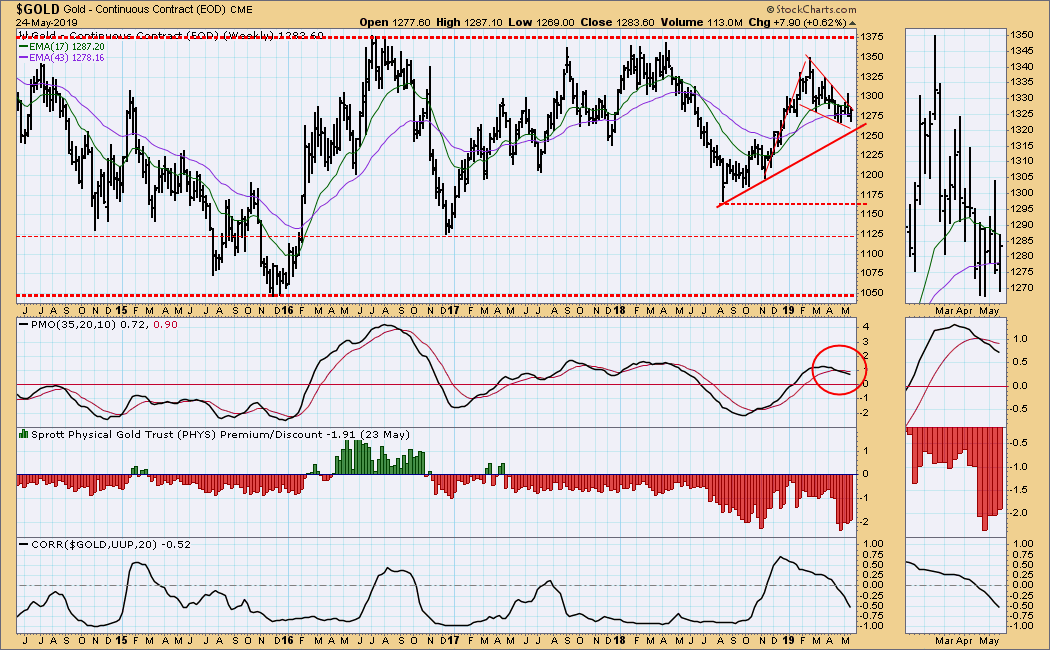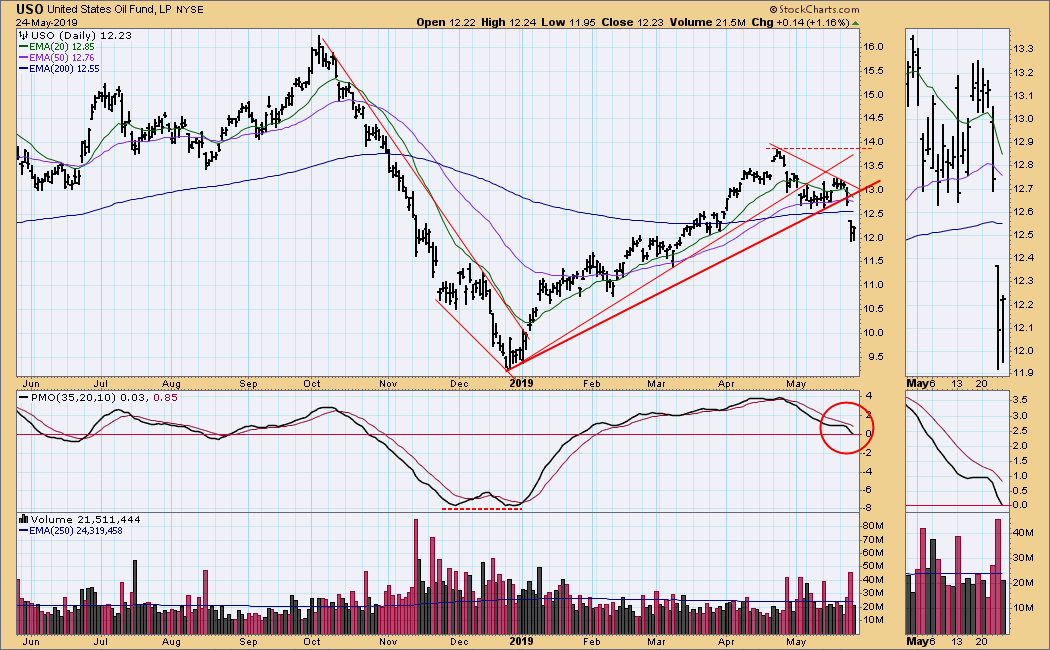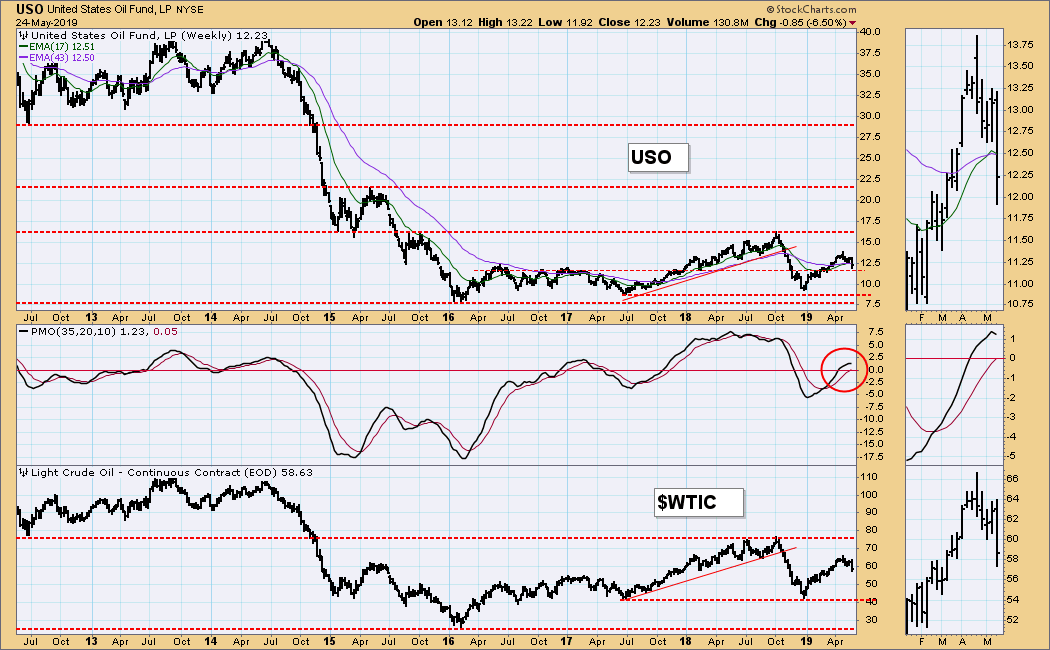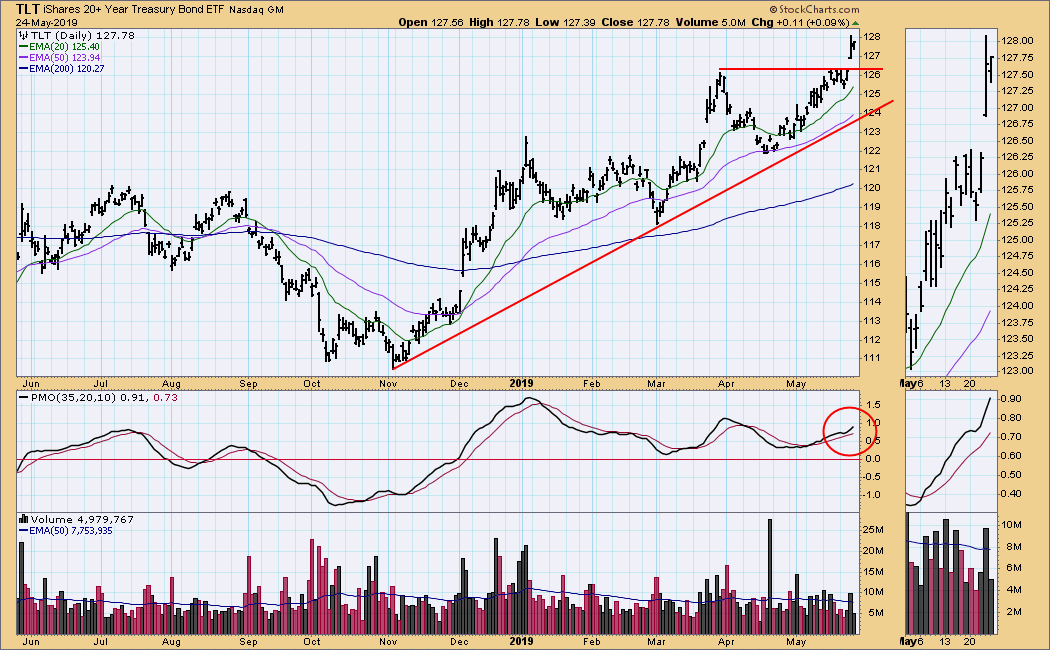
When the 50EMA crosses up through the 200EMA, it is commonly known as a "Golden Cross," because it signals the potential for a long-term bullish outcome. For the sake of consistency, in DecisionPoint parlance we refer to the 50/200EMA relationship as the Long-Term Trend Model (LTTM), which generates BUY or SELL signals when the 50EMA moves above or below the 200EMA. About a year ago I began collecting data on the percentage of LTTM BUY Signals among S&P 500 component stocks. The chart below shows the SPX LTTM index, and a 20EMA serves as the index signal line. Note that this week the SPX LTTM Index crossed down through its signal line, generating a long-term SELL signal for this indicator.
I should emphasize that this is intended to be a long-term indicator, but one year of data is not sufficient to evaluate how it will behave over the long term.
The DecisionPoint Weekly Wrap presents an end-of-week assessment of the trend and condition of the stock market (S&P 500), the U.S. Dollar, Gold, Crude Oil, and Bonds.
Watch the latest episode of DecisionPoint on StockCharts TV's YouTube channel here!
GLOBAL MARKETS
BROAD MARKET INDEXES
SECTORS
Each S&P 500 Index component stock is assigned to one, and only one, of 11 major sectors. This is a snapshot of the Intermediate-Term and Long-Term Trend Model signal status for those sectors.
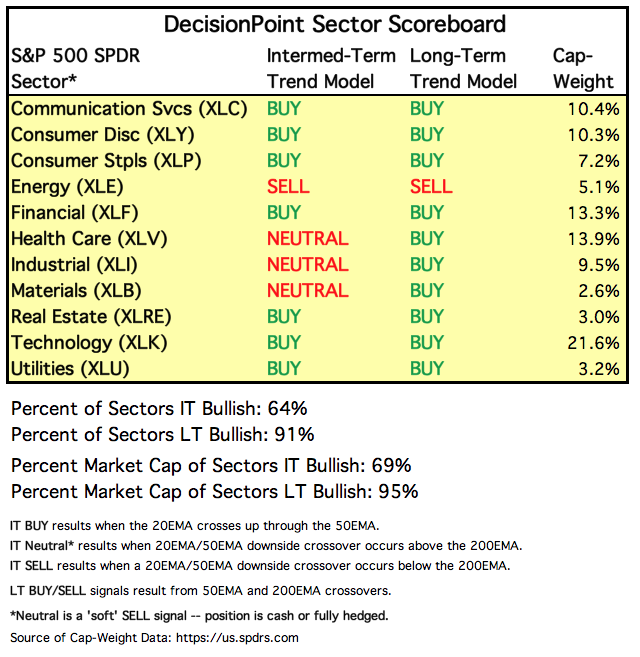
STOCKS
IT Trend Model: BUY as of 2/1/2019
LT Trend Model: BUY as of 2/26/2019
SPY Daily Chart: I'm still pushing the double top theme in spite of the recent bounce, during which the daily PMO continued its decline. S&P 500 total volume has been weak on up days. And the VIX overbought level currently seems to be at the 20SMA rather than the top Bollinger Band. The most encouraging thing on this chart is the potential short-term double bottom.
SPY Weekly Chart: The weekly PMO has topped, which is an indication of lower prices to follow.
Climactic Market Indicators: There were climactic readings on Tuesday (upside exhaustion) and Thursday (downside exhaustion), and neither proved to be conclusive.
Short-Term Market Indicators: Note that the recent STO-B and STO-V tops have lowered the overbought level in the last month. The lowest recent oversold level is about -200 to -300, so I'll look for that to be challenged soon.
Intermediate-Term Market Indicators: The PMO, ITBM, and ITVM are at the zero line. In a bull market that would be oversold, but we'll have to wait and see.
CONCLUSION: It is now obvious to me (and probably most people) that a trade agreement with the Chinese will not be reached, and that North Korea will not denuclearize. Both countries, totalitarian governments, have been simply running out the clock. From the beginning I thought this might be where the negotiations were headed, but I also hoped that maybe this time would be different. Well, it's not, and the market doesn't like it. There are lots of doomsday scenarios out there, but at this point I don't think that anyone knows how the tariff thing is going to work out. We'll see.
The technical picture is not good, particularly with the dreary fundamental backdrop. First there is the SELL signal covered in the lead paragraph. Even without deep historical data for comparison, it looks pretty solid. The intermediate-term indicators in the chart immediately above are not the least bit oversold, and they can accommodate a continued price decline. As usual, we cannot see the future, but the current technicals are pointing toward less favorable outcomes.
DOLLAR (UUP)
IT Trend Model: BUY as of 2/7/2019
LT Trend Model: BUY as of 5/25/2018
UUP Daily Chart: I don't know what event inspired it, but on Thursday price tried to break out of the top of the rising wedge pattern. However, price reversed intraday and closed near the day's low and well below the prior day's close.
UUP Weekly Chart: Price is near the top of an eleven-year trading range, so my default assumption is that it will be stopped by resistance.
GOLD
IT Trend Model: NEUTRAL as of 4/16/2019
LT Trend Model: BUY as of 1/8/2019
GOLD Daily Chart: The rising wedge structure could still be valid, but price needs to get strong enough to move the daily PMO above the zero line.
GOLD Weekly Chart: The weekly PMO is above the zero line, but it needs to start rising again.
CRUDE OIL (USO)
IT Trend Model: BUY as of 2/19/2019
LT Trend Model: BUY as of 4/17/2019
USO Daily Chart: This week's decline was not unexpected, but the sharp drop on Thursday was still a surprise. The cause is supposedly oversupply, and I agree with that.
USO Weekly Chart: The weekly PMO has topped, and lower prices are expected. There seems to be good support for WTIC at $42/bbl.
BONDS (TLT)
IT Trend Model: BUY as of 12/6/2018
LT Trend Model: BUY as of 1/2/2019
TLT Daily Chart: Thursday's gap up was quite surprising to me. In a triangle situation the flat line is the weakest, but the strength of the breakout was more than expected.
TLT Weekly Chart: There is a rising wedge in this time frame, which should resolve downward; however, upside potential to the the 2016 top cannot be dismissed in the longer term.
**Don't miss any of the DecisionPoint commentaries! Go to the "Notify Me" box toward the end of this blog page to be notified as soon as they are published.**
Technical Analysis is a windsock, not a crystal ball.
Happy Charting!
- Carl
NOTE: The signal status reported herein is based upon mechanical trading model signals, specifically, the DecisionPoint Trend Model. They define the implied bias of the price index based upon moving average relationships, but they do not necessarily call for a specific action. They are information flags that should prompt chart review. Further, they do not call for continuous buying or selling during the life of the signal. For example, a BUY signal will probably (but not necessarily) return the best results if action is taken soon after the signal is generated. Additional opportunities for buying may be found as price zigzags higher, but the trader must look for optimum entry points. Conversely, exit points to preserve gains (or minimize losses) may be evident before the model mechanically closes the signal.
Helpful DecisionPoint Links:
DecisionPoint Shared ChartList and DecisionPoint Chart Gallery
Price Momentum Oscillator (PMO)
Swenlin Trading Oscillators (STO-B and STO-V)



